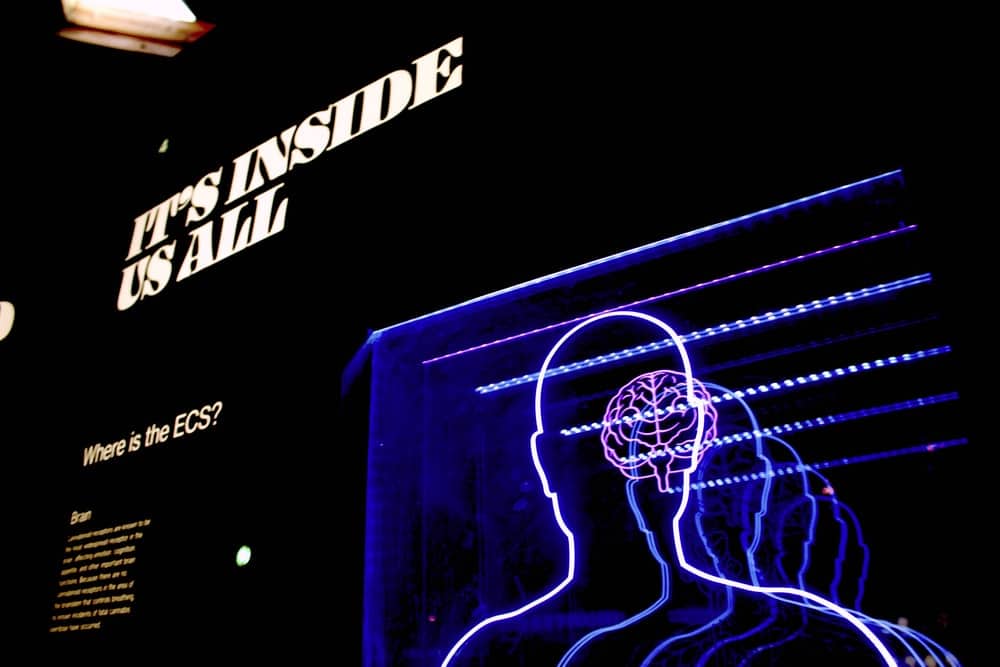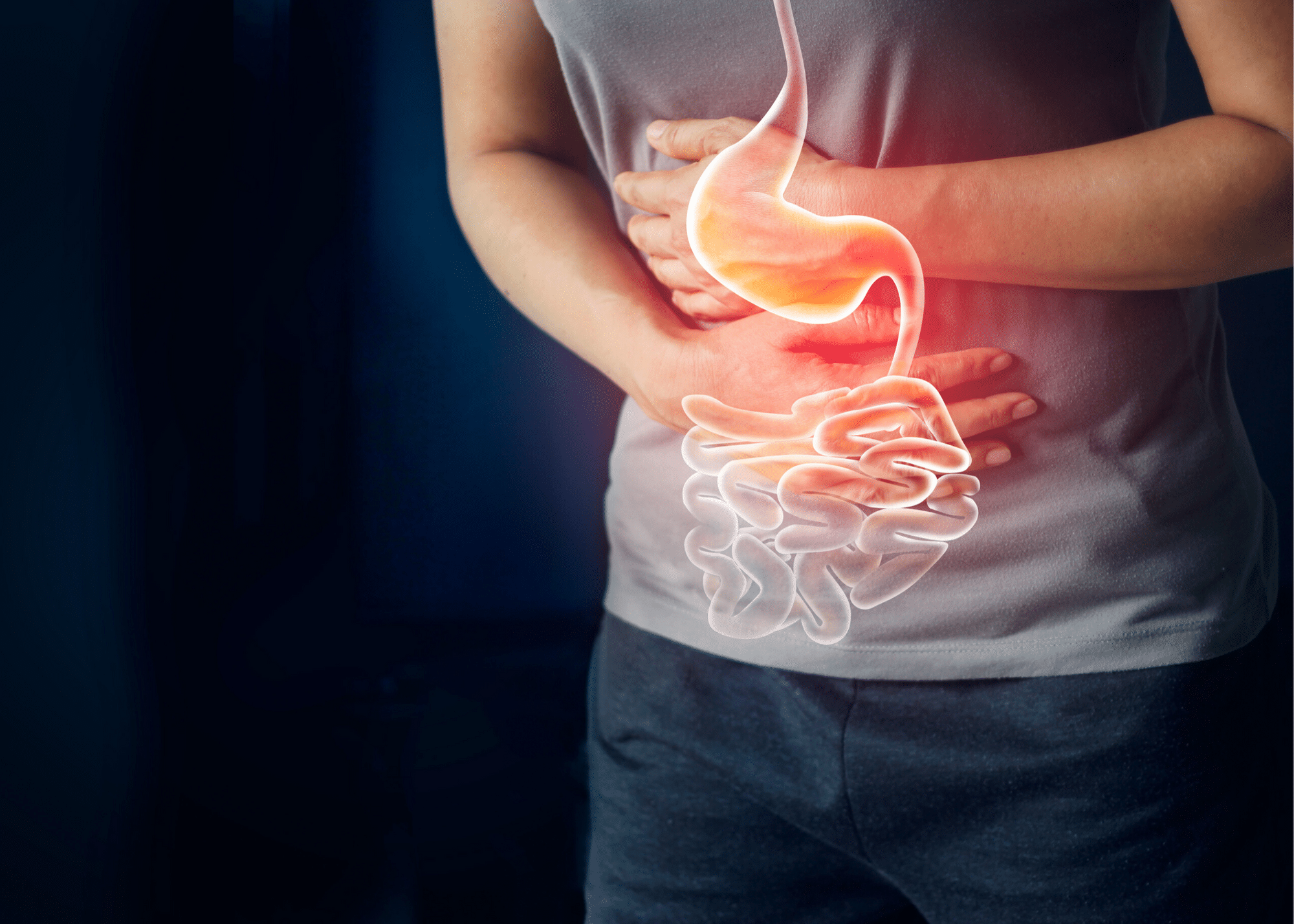Bad cramps? Everything you need to know about cramps & IBS
Posted on July 22, 2020

We often talk about ‘cramping up’ or having particularly ‘bad’ cramps, but what are they, actually? Cramps are one of the main symptoms of IBS and can be described as feeling uncomfortably full or nauseous after eating a small or normal sized meal. This feeling can lead to involuntary, painful muscle contractions.
Although cramps can be felt anywhere around the abdomen, they are mostly reported around the lower half. With IBS, cramps may be worsened soon after eating, and can be either relieved or worsened after a bowel movement.
Where does the pain from IBS come from?
The pain that IBS causes can be described as both visceral and functional. It is visceral as it comes from your intestines (where food may be trapped/fermenting), but also functional as there is no structural abnormality within the gut to explain the pain. Although there is a lack of ‘visual’ abnormality in the digestive system, the pain is very real.
What is happening in the body to cause cramps?
The brain and gut are an intertwined unit that continually interact. The brain is constantly ‘checking over’ what is happening in the gut – looking at what has been ingested and what is being digested. Along with other factors, this monitoring interacts with the brain’s pain centres to either dial pain perception up or calm it down.
In people with IBS, the intestinal movement from digesting food misguidedly activates pain-sensing nerve receptors (hyper visceral sensitivity) located in the intestines. These ‘extra sensitive’ nerve receptors are relayed to certain areas of the brain, where they are experienced as painful sensations such as cramps.
A process called central sensitisation occurs when the pain is continuous, like it is with IBS. The constant pain modifies the way the central nervous system works, causing more sensitivity and pain is more easily experienced. This creates a ‘loop’ of pain – meaning cramps occur more frequently, with less stimulus. The pain is not in your head!
How do FODMAPs impact cramps?
In the small and large intestine, FODMAP molecules have an osmotic effect, meaning they draw more fluid into the bowel. These molecules are also rapidly fermented by colonic microflora, producing gas. Both the increase in fluid and gas production distends the bowel, which may cause the sensation of abdominal cramps, affecting how the muscles in the wall of the bowel contract.
What are some of the foods/diets that can cause cramps?
Certain foods are known to stimulate cramps in general, however the severity will depend on the individual, irrespective of IBS diagnosis.
High fat foods: creamy and fried foods – such as full cream dairy products (milkshakes, ice cream) and oily foods (burgers, pizza, kebabs) can be hard to digest. Fat impacts our gut motility, which can affect the rate and efficiency of our digestion. Also, when we eat meals high in fat, our liver secretes bile to help us break the fat down. Normally, bile acids are reabsorbed in the small intestine, but this reabsorption does not occur as efficiently in some people, causing malabsorption. Malabsorption causes bile acids to flow through to the colon, rather than back to the liver. When too much bile acid ends up in the colon, it draws in more fluid, causing cramps and osmotic diarrhoea. 1
Caffeine: caffeine is a stimulant and ‘speeds things along’ our digestive system by increasing the muscle contractions, which can in turn move the contents through the bowel at a faster rate and cause cramps. Also, caffeine is often mixed with milk in a coffee, which can trigger a ‘double whammy’ of cramps caused by both the caffeine and the commonly malabsorbed disaccharide (the ‘d’ in FODMAP), lactose, found in milk. This can lead to cramps, followed by a bout of diarrhoea.
Spicy foods: spicy seasoning is one of the most common sources of food-induced diarrhoea and cramps, as it can irritate the stomach lining while it is digested. This irritation can cause painful cramps, as the body wants the spice ‘out of there’ as soon as possible, so gut transit time is decreased.
Too much fibre: eating too much fibre also promotes fermentation and gas formation, which can lead to painful cramps. There are three types of fibre – soluble, insoluble and resistant starch. Soluble fibre and resistant starch are fermented by bacteria in the large intestine to produce short chain fatty acids and gases, while insoluble fibre absorbs water and is not fermented by gut bacteria, but adds bulk to stool to make them easier to pass.
Getting enough fibre in your diet is very important for optimal gut health, but too much fibre can make subsequent bowel movements too big and bulky, becoming hard to pass or diarrhoea-inducing. This is why it is important to get our fibre intake at ‘just the right’ amount of 25-30g/day.
What are some non-food influences that can affect cramps?

Stress: the gut and the brain are constantly talking to each other. Given how closely the gut and brain interact, it is easier to understand why your intestinal pain may feel heightened
during times of stress.
When stressed, the nervous system can put added pressure on our blood vessels, which contracts the muscles. Contracture results in tightening and shortening of the muscle,
causing stiffness and pain.
Hormones: females may find that around their time of month, cramps feel more painful than usual. Menstrual cramps are typically caused by hormones released around our period called prostaglandins, ‘contraction’ hormone that can help the uterus shed its lining. Hence, menstruation may feel more painful as IBS cramps are combined with the effects of period cramps. Also, prostaglandins can enter our bloodstream and have similar effects on other smooth muscles, such as our bowels, which can result in diarrhoea.
What can you do to combat cramps?
Think of the signals that pass between the body and brain through the spinal cord like a gate that our brain has control over. Closing the gate decreases signals and blocks pain, while opening the gat increases the signals that reach the brain and amplifies pain. This knowledge of how our brain processes pain signals is pivotal to understanding what we can do to combat cramps.
Psychological approaches work to ‘close the gate’ on pain through focussed attention. Such measures include practices such as meditation, hypnosis and relaxation therapies which work to divert our attention from the pain of our cramps to the activity we’re doing. Your dietitian will be able to give you more information and refer you to the appropriate professionals.

In the same vein, regular, gentle physical activity can help to divert your attention away from the cramps and stretch out. Yoga is a particularly helpful form of exercise that typically addresses both the mind and body, and some movements are helpful in enhancing energy circulation in and around the intestines, which may help with reducing pain. Also, due to the focus on deep breathing during a yoga class, the parasympathetic nervous system (the rest, digest and repair arm of our autonomic nervous system) is activated. Therefore, yoga can be helpful in addressing both muscle movement around the intestines and stress reduction.
Medications such as anticholinergic agents may help with the short-term reduction of abdominal pain after meals. Butylscopolamine, cimetropium, pinaverium and otilonium are four anti-cramping medications have been shown to help. However, when it comes to medication, it is important to consult with a general practitioner for further guidance.
Consider the low FODMAP diet as it temporarily restricts intake of poorly absorbed fermentable carbohydrates that could be causing you to experience painful cramps, flatulence, diarrhoea or constipation. However, the low FODMAP diet is not a diet you should embark on alone, as it involves restricting FODMAP containing foods which can be found in fruits and vegetables which are known to be healthy. It is important to work with a dietitian who will help you not only complete the elimination part of the diet, but also identify your tolerance to FODMAP foods, as many of these provide essential nutrients such as fibre and probiotics.
In conclusion
Cramps in IBS are stimulated by a miscommunication between the gut and the brain, leading to heightened experiences of pain. It is important to acknowledge that the pain you are experiencing is very real, even if there is no anomaly visually identified to explain your cramps. Severe cramps can be debilitating, so it is important to work with a professional to establish what may be causing your cramps and the measures you can take to combat them.
1.Feinle-Bisset C, Azpiroz F. Dietary lipids and functional gastrointestinal disorders. The American Journal of Gastroenterology. 2013 May 1;108(5):737-47
Written by: Charlotte Barber (Student Nutritionist)
Reviewed by: Sotiria Karatsas (Accredited Practicing Dietitian)










